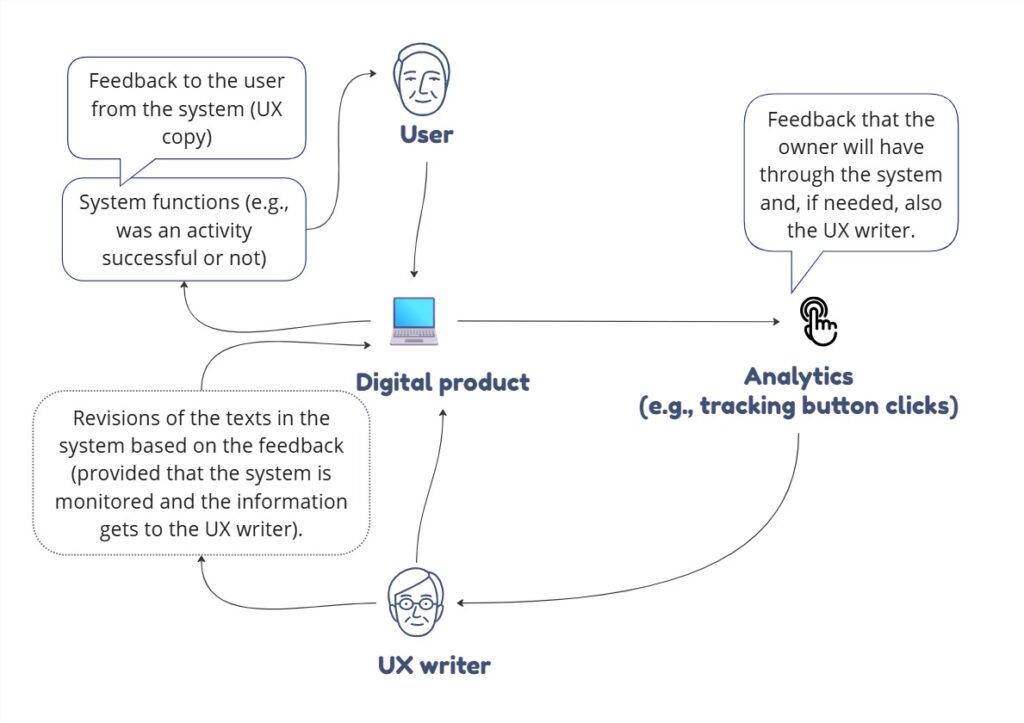Human-System Interaction in a Digital Environment — the Effect of Microcopy to User Action
About the project
Why study language use in digital environments?
In today’s world, many of our daily activities have moved into digital environments – web pages, information systems, and other such digital spaces. To ensure that navigating these spaces is simple and intuitive, one must consider user-friendliness. One of the key aspects of user-friendliness is clear and unambiguous communication between the system and the user. This communication takes place via microcopy – (usually) short texts that appear in the user interface that guide the user through the system towards their goals (e.g., sending in an application, purchasing plane tickets, or booking accommodation).
Microcopy is written during the design phase of digital environments. Unlike in typical communication, microcopy writers (UX writers) do not receive real-time feedback from users when problems arise within the communication. This is because the text is already embedded in the system by the time users interact with it. Instead, feedback can only be gathered indirectly via various user experience metrics (provided that analytics have been implemented in the system). While major wording issues can be identified during prototyping and testing phase (assuming a prototype is created before development), systems are continuously updated and upgraded. As these changes often need to be made quickly there is not always time or financial incentive for extensive testing. This means that microcopy must be written with foresight and clarity, anticipating user needs and worries. Moreover, microcopy has to be often concise, as design constraints may limit the amount of space available for text.

Like design components, which have specific functions within a design – such as text boxes for displaying textual content and buttons for performing actions – linguistic tools also have distinct usage patterns and functions. For example, in Estonian, directives are formed using the imperative mood along with the polite word palun ‘please’ (e.g., Palun tee aken lahti ‘Please open the window’) or by using a question with a modal verb in the conditional mood (Kas sa teeksid akna lahti? ‘Would you open the window?’). Even a single word carries significant information; for instance, the word luba ‘allow’ conveys information about both the agent and the action. The same message can be expressed using different linguistic constructions or synonyms, which may carry different connotations and thus alter the interpretation of the conveyed message. Therefore, in addition to design, the choice of linguistic tools also impacts the overall user experience. If linguistic choices are not given proper attention and texts are written hastily without considering their function, the user experience of the entire environment may suffer – even if the design itself is clear and aesthetically pleasing.
What kind of microcopy is studied in the project, how is it done, and for what purpose?
The project has two main objectives:
- To map out Estonian language usage in microcopy based on the multimodal corpus of textual and visual elements (i.e., designs) compiled for this purpose.
- To pinpoint how linguistic and visual elements interact in the perception of digital environments and in the creation of effective communication.
In this project, we analyse:
- the linguistic tools used in system-user communication,
- how text and design interact,
- how users perceive the coherence between text and design, and
- which linguistic tools are most suitable for which design components.
Our research focuses on system notifications, forms, buttons, and links. These design components include texts that resemble everyday communication dynamics the most, as users must respond to them in some way, such as following error message instructions or deciding which button to click.
As a result of the project, we will develop a multimodal corpus of microcopy and designs, which will help describe Estonian language usage in microcopy and identify connections between linguistic choices and common design components. Additionally, we will conduct rating and perception experiments, allowing us to determine which linguistic tools are most effective for writing microcopy from a user perspective and what factors influence the processing and interpretation of linguistic and visual information.
The findings will serve as a basis for further research as well as for developing guidelines for writing microcopy in digital environments in Estonian.
This project is funded by the Republic of Estonia Ministry of Education and Research through the programme “Estonian language and culture in the digital era 2019–2027”. The project duration is 01.01.2024–31.12.2027.
